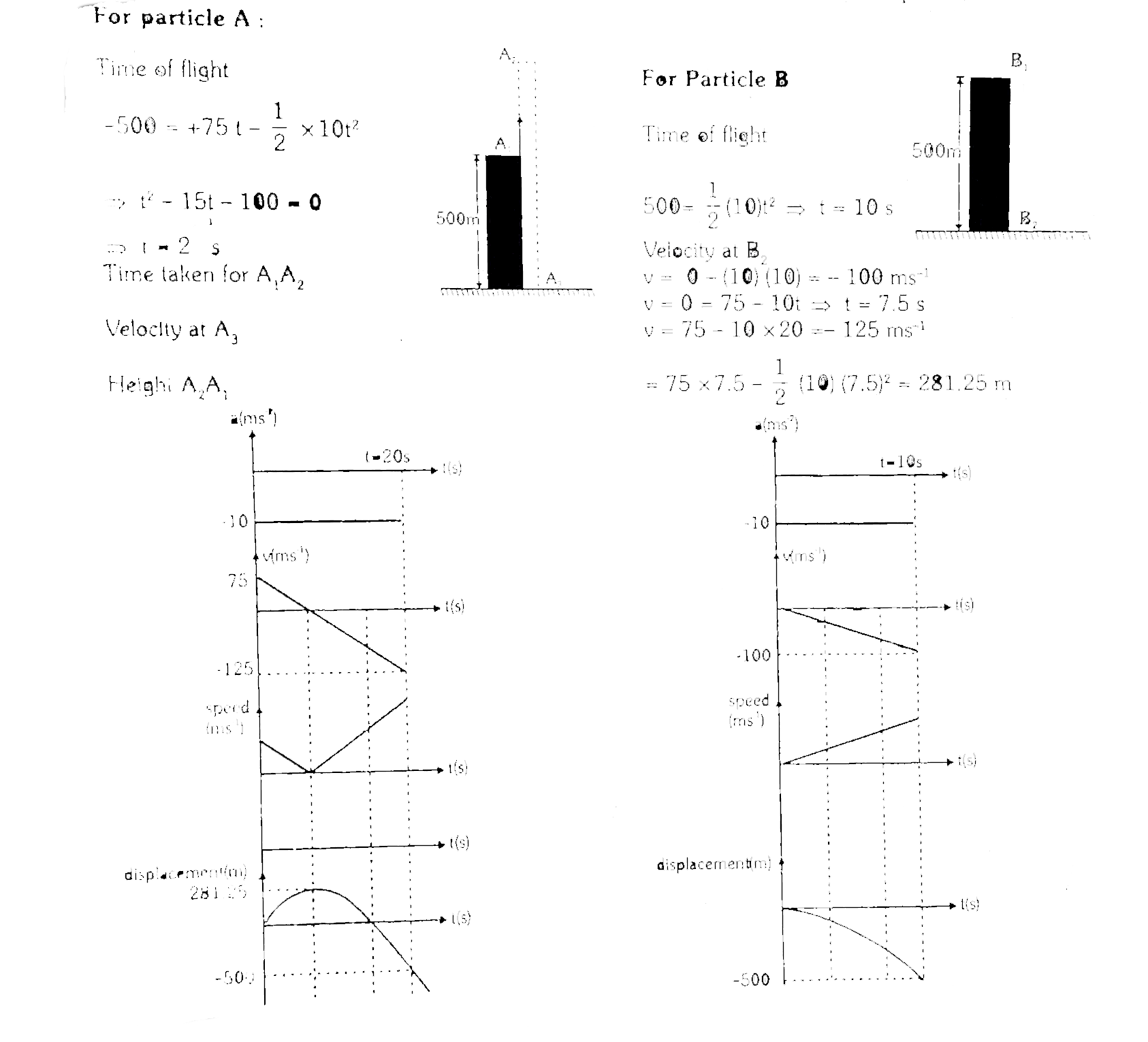If body travels half of its path in the last second of its fall from rest, find the time and height of its fall.Solution in Gujrati
Topper's Solved these Questions
- MOTION IN A PALNEBOOK - ALLEN CHAPTER - MOTION IN A PALNEEXERCISE - EXERCISE-02
37 Videos
- MOTION IN A PALNEBOOK - ALLEN CHAPTER - MOTION IN A PALNEEXERCISE - EXERCISE-03
6 Videos
- KINEMATICS-2DBOOK - ALLEN CHAPTER - KINEMATICS-2DEXERCISE - Exercise (O-2)
47 Videos
- NEWTON'S LAWS OF MOTION & FRICTIONBOOK - ALLEN CHAPTER - NEWTON'S LAWS OF MOTION & FRICTIONEXERCISE - EXERCISE (JA)
4 Videos
Similar Questions
The distance x of a particle moving in one dimensions, under the action of a constant force is related to time t by the equation, t=√x+3, where x is in metres and t in seconds. Find the displacement of the particle when its velocity is zero.
View SolutionA point traversed half the distance with a velocity v0. The remaining part of the distance was covered with velocity v1 for half the time, and with velocity v2 for the other half of the time. Find the mean velocity of the point averaged over the whole time of the motion.
View SolutionA particle is moving in xy-plane .At certain instant the components of its velocity and acceleration are as follows ux=3m/s,uy=4m/s,ax=2m/s2anday=1m/s2. The rate of change of speed at this moment is
View SolutionA piece of wire is bent in the shape of a parabola y=kx2 (y-axis vertical) with a bead of mass m on it. The bead can slide on the wire without friction. It stays at the lowest point of the parabola when the wire is at rest. The wire is now accelerated parallel to the x-axis with a constant acceleration a. The distance of the new equilibrium position of the bead, where the bead can stay at rest with respect to the wire, from the y-axis is:
View SolutionIf the body travels half its total path in the last second of its fall from rest, find: (a) The time and (b) height of its fall. Explain the physically unacceptable solution of the quadratic time equation. (g=9.8 m//s^(2))
View SolutionA body travels half of its total path in the last second of its fall from rest.Find the height from which it falls and the time of flight.
View SolutionA body falling freely from rest from the top of a tower describes 60.1 m in the last second of its fall. Find the height of the tower.
View SolutionIF a freely falling body covers halfs of its total distance in the last second of its journey. Find its time of fall
View SolutionA body falling freely from a certain height travels half of that height in the last second of its motion. Find the height from which it stated to fall.
View SolutionA body falls from rest. In the last second of its fall, it covers half of the total distance then the total time of its fall is
View SolutionA body falls from rest. In the last second of its fall, it covers half of the total distance then the total time of its fall is
View SolutionIf a freely falling body covers half of its total distance in the last second of its journey, Find its time of fall.
View SolutionIf a stone dropped from the top of a tower travels half, of the height of the tower during last second of its fall, the time of fall is (in seconds)
View SolutionIf a freely body covers half of its total distance in the last second of its journey,Find its time of fall.
View SolutionDerive an equation for the distance covered by a uniformly accelerated body in nth second of its motion. A body travels half its total path in the last second of its fall from rest, calculate the time of its fall.
View SolutionIf a freely falling body covers half of its total distance in the last second of its journey. Find its time of fall.
View Solution

